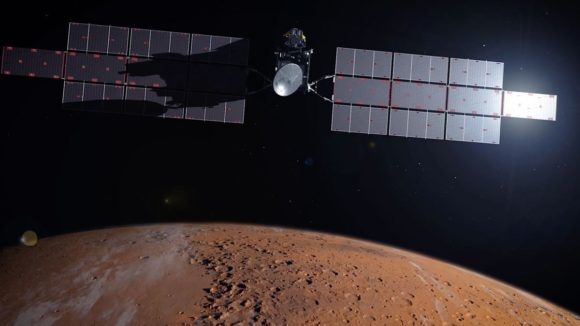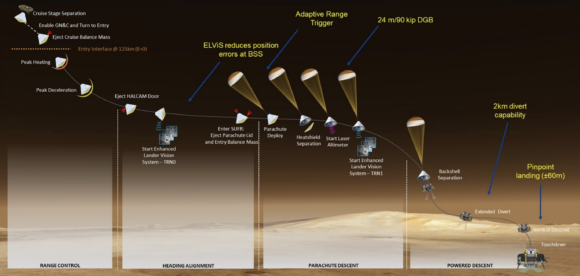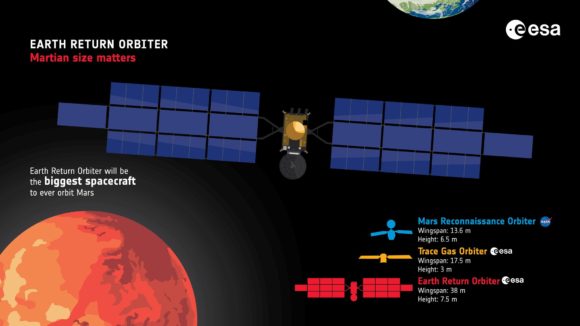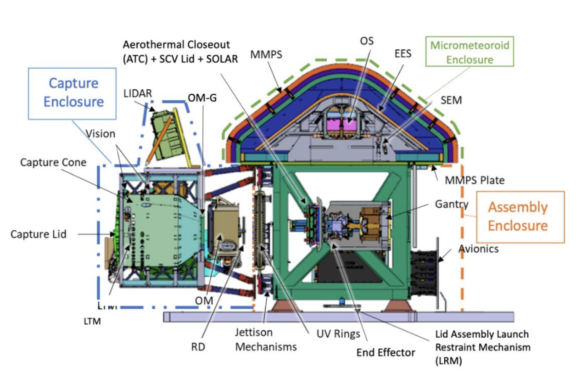NASA's most complex and expensive program to study Mars faces the risk of never seeing the light of day. Talking about the MSR program (Mars sample return), a mission aimed at bringing samples from Mars to Earth. Unfortunately, the MSR status is currently suspended, a status which, if unresolved, could result in indefinite delay or cancellation. De facto. The MSR was scheduled to cost less than five billion dollars, and the first probe was scheduled to launch in 2026. After spending more than three billion dollars, the first component of the MSR in charge of NASA will not launch until 2030 and is estimated to cost between 8 and 11 billion dollars in total. Let's remember that the MSR, in fact, consists of three different probes, the Perseverance rover – which, as we all know, is already on Mars collecting samples – the SRL probe, also from NASA, and the European Orbiter ERO. srl (Sample retrieval lander) It will be a large probe equipped with a MAV rocket that will carry an OS container with samples and place it in Mars orbit, where it will be collected by the ERO probe (European return vehicle) from the European Space Agency, which will transport them to Earth, where they will land inside a capsule. Of course, such deployment of means is not cheap.

As a result, the MSR mission suffered several reductions, most notably the cancellation of the European SFR vehicle (Sample fetch rover), which was scheduled to travel aboard the SRL probe to collect Perseverance samples. The increase in the mass of the SRL probe led to this decision because, otherwise, it would have been necessary to increase the size of the heat shield above 4.5 meters from that used on Curiosity and Perseverance (or launch just one more additional probe with the rover). Under the new plan, NASA will keep informed that Perseverance will still be operational when the SRL lands, and if not, two SRH helicopters will be used (Sample recovery helicopter) as a Plan B to remove samples left on Earth by Perseverance in case this eventuality occurs. However, the increase in costs also forced the cancellation of one of the two helicopters. Furthermore, after years of development, the exact design of the OS and CCRS sample container remained unresolved (Capture, containment and return system), which are two critical elements of the mission. The operating system container will be launched by the MAV and should wait in Mars orbit until it is recovered by ERO (the European lander should lift off a year before the SRL), so, despite its small size, it should be possible to detect it in orbit by 2018. A probe traveling from Earth that is able to survive re-entry into Earth's atmosphere at escape velocity inside a specific capsule.



Given the escalating cost of the programme, a damning independent report on the project was published in September 2023, which mainly criticized its utter lack of realism. This was neither more nor less than the second independent report for this assignment, which is highly unusual for a project still in Phase B. The report concluded that the SRL launch date, which had already been postponed from 2026 to 2028, was simply impossible to achieve, but it also saw the probability of it launching in the next launch window, 2030, as very low (meaning the samples would reach Earth in 2035). instead of 2033). The report strongly criticized the lack of specificity in the design of the OS container and the CCRS system and suggested giving greater freedom to European partners when designing the ERO probe and its associated capsule (the CCRS system containing the samples in ERO is by NASA's Goddard Center). A separate discussion, not addressed in the report, is that the decision-making authority at the highest level of these European partners in this very expensive project is somewhat nullified; It is not a trivial matter, because the cost of MSR may prevent the European Space Agency from one day being able to launch a probe to place the Rosalind Franklin rover on the surface of the Red Planet. The report acknowledges the negative impact of the pandemic and the war in Ukraine, which, in the case of Europe, prevented the release of Rosalind Franklin.




The report also criticized the complex organization of the MSR, a program run by JPL, but in which several NASA centers, such as Goddard and Marshall, as well as the European Space Agency, are involved (several centers were involved not only for technical reasons, but to give political solidity to the project). All this entails enormous expenditures derived from coordination between various organizations, countries and subcontractors. Another point of criticism is the architecture chosen, which was designed in such a way that time played against it (the probes should be launched as soon as possible to take advantage of the fact that Perseverance is still active and to avoid the dust storm season on Mars. Since the SRL was solar panels, RTGs are like that beloved—, as well as to reduce the degradation of the solid fuel of the MAV). It is important to know that MSR is a project funded separately from NASA's Mars Exploration Program (MEP), which allows it to receive funds without having to compete with other Mars missions, although it clearly impacts NASA's planetary exploration budget. affects him).





In response to this report, the US Senate's draft NASA budget planned to spend only $300 million on MSR in the next fiscal year, while NASA had requested about $950 million. The result is that last November NASA ordered Goddard and Marshall Centers to slow down work on the MSR for fear that the number finally approved would be the Senate's number. In January 2024, JPL suddenly proceeded to fire several outside specialists associated with MSR, a process that culminated a few days ago in the announcement of the dismissal of approximately 530 workers (8% of JPL's total workforce). Of course, it's possible that the final MSR budget will be what NASA expects, but it's difficult to fund the project as planned after the harsh conclusions of the independent report. Until a clear solution is reached to the critical points highlighted in the report, we can say that the MSR program will be halted De facto. Meanwhile, China's Tianwen 3 mission has an advantage in this particular race to return the first samples from a neighboring planet.

References:
- https://www.nasa.gov/wp-content/uploads/2023/09/mars-sample-return-independent-review-board-report.pdf
- https://www.planetary.org/articles/what-went-wrong-with-mars-sample-return
- https://www.latimes.com/science/story/2024-01-07/questions-about-nasas-mars-sample-return-mission-put-jpl-jobs-in-jeopardy

“Beer enthusiast. Subtly charming alcohol junkie. Wannabe internet buff. Typical pop culture lover.”
